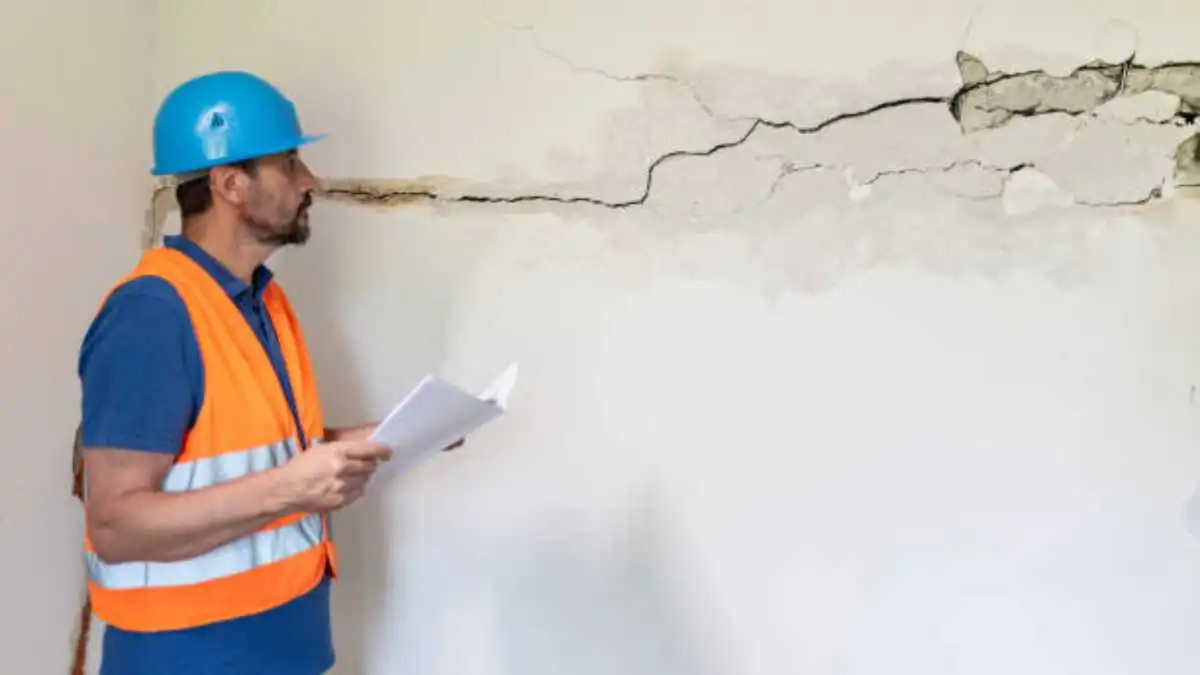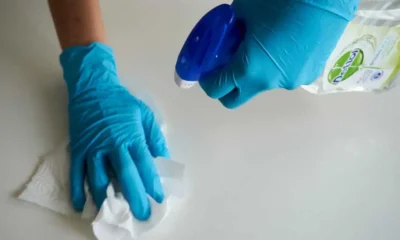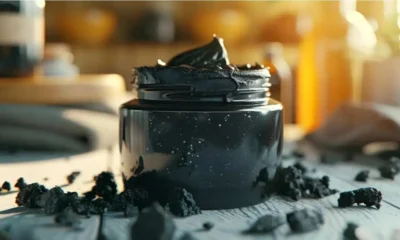GENERAL
Understanding the Importance of Post-Remediation Verification in Mold Removal

Mold remediation is an essential process for eliminating mold growth and preventing it from spreading, but the job isn’t complete until a thorough post-remediation verification has been conducted. After mold removal, post-remediation verification ensures that the affected area has been fully cleaned, that mold levels are within acceptable limits, and that the underlying cause of the moisture problem has been addressed. Without proper verification, mold can return, leading to further contamination, structural damage, and health risks.
In this article, we will discuss the role of post-remediation verification, why it’s crucial for effective mold management, and how it ensures long-term success in mold removal efforts.
Table of Contents
1. What is Post-Remediation Verification?
Post-remediation verification (PRV) is a comprehensive inspection and testing process conducted after mold remediation work has been completed. The purpose of PRV is to confirm that the mold removal was successful, and that the environment is safe for occupancy. While mold remediation focuses on eliminating visible mold and its sources, post-remediation verification confirms that the area has been properly restored and that no residual contamination remains.
Key Steps in Post-Remediation Verification:
- Visual Inspection: The first step in PRV is a detailed visual inspection of the area that was remediated. Inspectors check for any remaining mold, water damage, or signs of moisture. They also look for evidence that all contaminated materials, such as drywall, insulation, or carpeting, have been properly removed.
- Moisture Measurement: Since mold thrives in damp conditions, it’s important to ensure that the moisture problem has been resolved. Moisture meters are used to measure the moisture content in walls, floors, and ceilings to ensure that they are dry and unlikely to support future mold growth.
- Air and Surface Sampling: Air quality testing and surface sampling are performed to measure the concentration of mold spores in the air and on surfaces. These samples are sent to a laboratory for analysis to confirm that mold levels have returned to normal, safe levels.
- Final Report: After the verification process, a detailed report is generated. This report provides a summary of the inspection and testing results, confirming whether the remediation was successful and offering recommendations for any further action if needed.
Post-remediation verification is essential for giving homeowners peace of mind, knowing that the mold issue has been fully resolved.
2. Why Post-Remediation Verification is Essential
While mold remediation is a critical step in addressing mold growth, it’s not enough to simply remove the visible mold. Without proper verification, there’s no guarantee that all the mold has been eliminated or that the environment is safe for re-occupancy. Mold spores can linger in the air and on surfaces, leading to a re-infestation if the underlying moisture issue hasn’t been adequately addressed.
Reasons Post-Remediation Verification is Crucial:
- Ensures Complete Removal: Mold can be tricky to eliminate, especially when it’s hidden behind walls or under flooring. Post-remediation verification ensures that no residual mold has been left behind, which could lead to further contamination.
- Confirms Safe Air Quality: Even after mold is removed, spores can remain in the air and continue to pose health risks. Air quality testing during PRV confirms that mold spore levels are within safe limits, reducing the risk of respiratory issues and allergic reactions.
- Prevents Recurrence: The underlying cause of mold growth—whether it’s a leak, poor ventilation, or humidity—must be addressed to prevent future mold problems. PRV includes moisture testing to ensure that the moisture issue has been fully resolved, reducing the chances of mold returning.
Without post-remediation verification, homeowners may falsely believe that their mold issue has been resolved, only to face new mold growth down the road. PRV provides the confidence that the remediation process was successful and that the area is truly safe.
3. The Role of Air Quality Testing in Post-Remediation Verification
Air quality testing is a crucial component of post-remediation verification because it measures the concentration of mold spores in the air. Mold spores are microscopic and can easily become airborne, spreading throughout the home and settling in new areas. Even if visible mold has been removed, lingering spores can cause mold to reappear if they are not addressed.
How Air Quality Testing Works:
- Air Sampling: During air quality testing, mold inspectors use specialized equipment to collect air samples from the affected area and other parts of the home. These samples are then analyzed in a laboratory to determine the concentration of mold spores.
- Comparative Analysis: Air samples are taken from both the indoor environment and the outdoor environment to establish a baseline for comparison. The indoor mold spore levels should be lower than or similar to outdoor levels. If the indoor spore concentration is significantly higher, it indicates that mold is still present.
- Identifying Mold Types: Air quality testing can also identify the specific types of mold present in the air, including dangerous species like Stachybotrys (black mold). This information is valuable for determining the appropriate next steps if elevated mold levels are detected.
By conducting air quality testing, post-remediation verification ensures that the indoor air is safe for occupants and free from harmful mold spores.
4. Preventing Future Mold Growth After Remediation
Even after a successful mold remediation and post-remediation verification, it’s important to take steps to prevent mold from returning. Mold thrives in damp, poorly ventilated environments, so controlling moisture and humidity levels is essential for long-term prevention. Addressing the root causes of moisture, such as leaks or poor drainage, ensures that your home remains mold-free.
Tips for Preventing Future Mold Growth:
- Fix Leaks Promptly: Water leaks from pipes, roofs, or windows are a common cause of mold growth. Make sure to repair leaks as soon as they are discovered to prevent moisture from accumulating in walls, floors, or ceilings.
- Improve Ventilation: Poor ventilation can trap moisture in bathrooms, kitchens, basements, and other humid areas. Installing exhaust fans, opening windows, and using dehumidifiers can help reduce indoor humidity and prevent mold from taking hold.
- Monitor Humidity Levels: Mold thrives in environments with high humidity. Keeping indoor humidity levels below 50% using dehumidifiers or air conditioning can prevent mold spores from growing.
- Regular Inspections: Even after successful remediation, it’s a good idea to schedule regular mold inspections, especially if your home has a history of moisture issues. Periodic inspections help catch potential problems early and prevent new mold growth.
By taking proactive measures, homeowners can reduce the risk of future mold problems and ensure that their living environment remains safe and healthy.
5. Post-Remediation Verification vs. Initial Mold Assessment: What’s the Difference?
While both an initial mold assessment and post-remediation verification are critical components of effective mold management, they serve different purposes at different stages of the process.
Initial Mold Assessment:
- Purpose: A mold assessment is conducted to identify the presence of mold, determine its type, and assess the extent of the contamination. It provides the information needed to develop a remediation plan.
- Methods: Mold inspectors use visual inspections, moisture meters, and air or surface sampling to detect mold in various areas of the home. The assessment helps pinpoint the source of moisture and the affected areas.
- Timing: A mold assessment is performed before any remediation work begins. It sets the foundation for understanding the scope of the mold problem and planning the appropriate course of action.
Post-Remediation Verification:
- Purpose: Post-remediation verification is conducted after mold remediation has been completed. Its goal is to confirm that the remediation was successful and that the environment is safe for re-occupancy.
- Methods: PRV involves visual inspections, moisture testing, and air or surface sampling to ensure that mold levels have returned to normal and that no further contamination is present.
- Timing: PRV is performed after the remediation process, serving as the final step to verify the effectiveness of the mold removal.
Both the initial assessment and post-remediation verification are necessary for successful mold management, ensuring that mold problems are addressed thoroughly from start to finish.
6. Why Professional Post-Remediation Verification is Necessary
While DIY mold removal methods are available, professional post-remediation verification offers a level of thoroughness and accuracy that is difficult to achieve on your own. Professional inspectors have the expertise, tools, and experience needed to properly assess the area, test air quality, and confirm that the mold issue has been fully resolved.
Benefits of Professional Post-Remediation Verification:
- Comprehensive Testing: Professional inspectors conduct thorough testing to ensure that all mold has been removed and that the air quality meets acceptable standards. They use specialized equipment to measure mold spore levels and detect hidden moisture.
- Objective Results: Hiring a professional ensures that the results are unbiased and accurate. Professional inspectors provide an objective assessment of the remediation process, giving homeowners peace of mind that their home is safe.
- Detailed Reporting: After the verification process, homeowners receive a detailed report outlining the findings and confirming that the area is mold-free. This report is valuable not only for your own records but also for potential buyers or tenants if you plan to sell or rent the property in the future.
By working with a professional service like The Mold Inspection Canary, homeowners can ensure that their mold remediation efforts are successful and that the environment is safe for long-term occupancy.
Conclusion
Post-remediation verification is a crucial step in the mold removal process, ensuring that the affected area is free from mold and that the underlying moisture problem has been addressed. This verification provides homeowners with confidence that the mold issue has been fully resolved, reducing the risk of future contamination.
By partnering with a trusted provider like The Mold Inspection Canary, you can ensure that every step of the mold remediation process is completed to the highest standard, keeping your home safe, clean, and mold-free for years to come.
-

 GENERAL3 months ago
GENERAL3 months agoUncovering the World of кинокрадко: The Dark Side of Film Piracy
-

 GENERAL1 month ago
GENERAL1 month agoUnveiling the Art of преводсч: How Translators Bridge Language Barriers
-

 GENERAL3 weeks ago
GENERAL3 weeks agoChristofle – For Those Who Dream of Family Heirloom Silver
-

 YOGA1 year ago
YOGA1 year ago4 Person Yoga Poses for Beginners


























